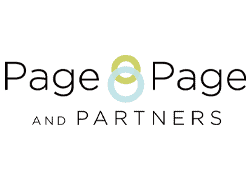JUDGING CRITERIA AND ENTRY FORMAT:
Entry Title
Please give a simple title for your entry of no more than ten words
Executive Summary – 200 words. 0 (zero) marks
This will be used if your entry is selected as a finalist and does not need to be anonymised.
Main entry
1. Budget Band Information, as below:
Band A under £10,000
Band B £10,001-£25,000
Band C £25,001-£50,000
Band D £50,001-£100,000
Band E £100,001-£200,000
Band F over £200,001.
If your client has declined to allow this, you must state this within your submission.
- Failure to provide the budget band seriously impacts the judge’s ability to assess the entry against other entries and may result in the entry being disqualified
- The budget band provides important context for judging the innovation, delivery and impact of a piece of work.
- Impressive work is not always dependent on budget size, so there is no right or wrong budget.
2. Situation Analysis and Benchmarking– 15 marks (300 words)
- In this section you should show the judges how well you understood the situation at the start of the project
- Use this section/analysis to clearly lay out benchmark data that you will refer to in your measurement of effectiveness later
- Show the judges the best information, data and insights you have about uptake of health interventions, current practice, defining/segmenting audiences, identifying educational or information needs, which channels will best reach the audience, competitive environment, creative landscape before the start of your work.
Judges’ top tips
- We work and operate in a world where there is a wealth of data and insights, so there is really no excuse for projects and programmes that are planned without this data.
- The judges will reward the strength and robustness of this data i.e. a well conducted piece of client market research will score more highly than a two-question internal survey monkey
- The judges will reward the variety of data that prompts useful insights and helps to shape a holistic view of the situation and audiences.
3. Objectives – 15 marks (250 words)
Describe the objectives for the project or programme including outputs (i.e., what materials/platforms are produced), out-takes (i.e., post-event evaluation, surveys showing changes in knowledge/understanding, social media/website engagement, sharing and commenting), and outcomes (i.e., changes in patient behaviour or outcomes, clinical practice or health policy versus the benchmark stated in the situation analysis) and specifically how these will be measured
4. Strategy – 15 marks (250 words)
- Please outline what your strategy was and why
- Refer to the data and insight in the situation analysis section
- Explain why this was the right strategy and any points to emphasise bold or innovative strategy selection.
Judges’ top tips
The judges will:
- Reward clarity of thought around strategies and how they are communicated – bullet points may be better than long prose
- Assess how well the chosen strategy/strategies might achieve objectives
- Reward entries showing a clever or insightful way that you interpreted the data and insights from the situation analysis to set your strategy
- Reward innovation in strategy
- Recognise how different communications disciplines are blended as part of the strategic approach.
5. Implementation – 15 marks (400 words)
- Please describe how you implemented the project or programme
- Please briefly outline why these specific tactics were selected
- For a programme this should include describing what tactics were deployed to implement the strategy
- For a meeting or stand-alone event this should describe how the meeting or event was delivered.
Judges’ top tips
- The judges need to know what you did or developed to judge this section – please keep descriptions clear and succinct
- When awarding marks in this section the judges will reward:
- a logical selection of tactical projects or outputs
- creativity and innovation in the way you execute the tactics
- clever selection and maximisation of channels
- scientific acumen and robustness
- the use of insights in finding creative ways to engage the defined audiences.
6a. Effectiveness Part One: Outputs and Out-takes vs Objectives - 10 marks (200 words)
- To help the judges assess the strength of the evaluation, please describe how successful the project or programme was in terms of outputs and out-takes achieved versus the relevant measurements set in the Objectives section
- You may include comments from third-party stakeholders in this section but ONLY if they clearly help to demonstrate the impact of the work and were a pre-planned part of your measurement approach
6b. Effectiveness Part Two: Outcomes vs Objectives - 10 marks (200 words)
- To help the judges assess the strength of the evaluation, please describe how successful the project or programme was in terms of the outcomes achieved versus the relevant measurements set in the Objectives section
- You may include comments from third-party stakeholders in this section but ONLY if they clearly help to demonstrate the impact of the work and were a pre-planned part of your measurement approach
Supporting Materials
Please only send information that helps the judges to see how you researched, planned, implemented and measured the programme within each specific category, e.g.:
- Information illustrating how the strategy was brought to life is helpful, but we don’t need a copy of every item
- Information supporting the evaluation and measurement is the most relevant
- ESSENTIAL: a summary sheet must be supplied detailing each piece of supporting material and clearly identifying where evidence can be found to support claims in the entry
- PLUS: An approved visual image or video that supports the entry for use in print, results pages online and in the AV.


